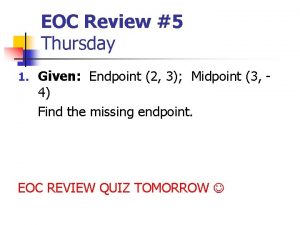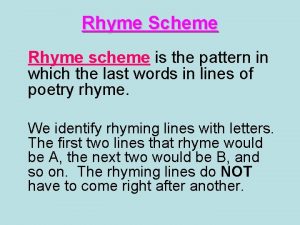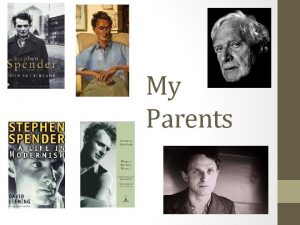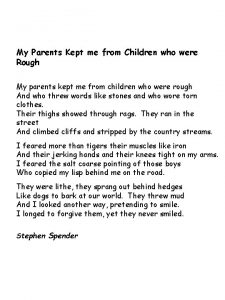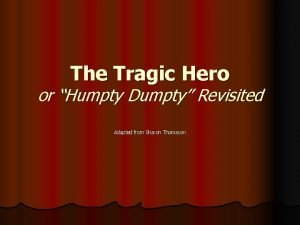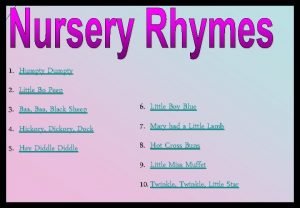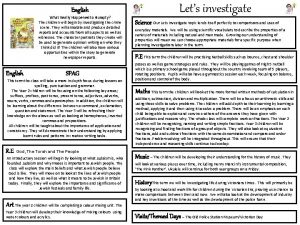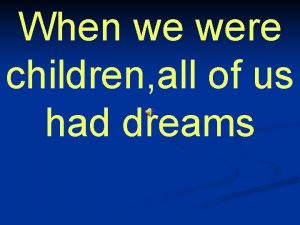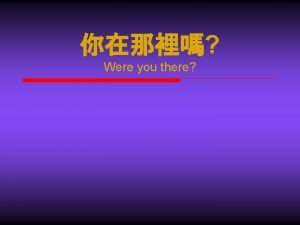Where were the children when Humpty Dumpty had



















- Slides: 19

Where were the children when Humpty Dumpty had a great fall? Indian elderly’s perception about the quality of familial care By Suchandrima Chakraborty Doctoral Scholar, International Institute for Population Sciences, Mumbai. Email: suchandrimachakraborty@gmail. com, suchandrima. chakraborty@tiss. edu

Introduction India will be placed in the zenith of both having the largest population and highest number of older population in the world. Little is known about the complex decision-making process behind transfers of physical, emotional and economic care between family members (Wolf, Freedman, and Soldo, 1997) A majority of the older population aged 60 years and above lives in the less developed countries of the world. Care-giving as one of the modality, plays a very influential role in the well-being of the older population Ageing of world population is the end product of demographic transition. In a case study conducted in Tamil Nadu, about perception of aged people, an currently married man expressed that he would like to die before the death of his spouse to avoid miseries in later life (Rajan, 1999) 1/6/2022 Suchandrima Chakraborty. Email: suchandrimachakraborty@gmail. com, suchandrima. chakraborty@tiss. edu 2

Care and support are thus unambiguously the utmost need of older generations. So, studying the changing pattern of care and support through actions and perceptions of the elderly about the way their children treat them in terms of importance analysing the subjective health of older population. Happiness and satisfaction with the current lifestyle are the two major components of subjective well-being of human wellbeing and so for the elderly it is no exception. It is also a well proven fact that being happy ultimately adds to overall wellbeing as mental health is one of the key constituents of overall health. So healthy living of an elderly population is very strongly correlated with the care and support which acts through subjective health. 1/6/2022 Suchandrima Chakraborty. Email: suchandrimachakraborty@gmail. com, suchandrima. chakraborty@tiss. edu 3

Brief Review of Literature “Getting old” on other hand, is a social concept and slightly related to the biological process of ageing (Desai, 1999). Old age is a social as well as natural product (Harris, 1983). A general feeling emerges with regard to the lack of reciprocation from children for all the sacrifices made in their upbringing by the parents. Children are considered to be the main support in old age but this feeling seem to have been materialised only in rare circumstances (Rajan, 1999). The elderly expects more support from the younger people and most often they are not fulfilled. As a result there is a friction within the family which often results in abuse and neglect of elderly (Sebastian, Shekher, 2010). 1/6/2022 The burden is too great and the resource is too few-not everyone is capable of providing care and not everyone has family members and friends to do so (WHO, 2002). Suchandrima Chakraborty. Email: suchandrimachakraborty@gmail. com, 4

According to World Bank (1993), many condition like poverty, exploitation, discrimination, unemployment and violence, account for about 42 percent of the disability adjusted life-year loss. Psychopathology is at least two and a half times more prevalent in the lower social class than in highest (Neuegebauer et al. , 1980; Sonpar, 2001) Factors such as social status and power and the effects of social comparison are also quite significant for the mental wellbeing (Sonpar, 2001). Thus in all this perspective, it is very clear that subjective health of and elderly is very much associated to the social and economic factors and at old age care and support received by the elderly if the major path of achieving all the components of social and economic satisfaction. 1/6/2022 5 Suchandrima Chakraborty. Email: suchandrimachakraborty@gmail. com,

Data Source • This paper has used the data of the recent large scale project of ageing conducted by Institute for Social and Economic Change, Bangalore and IEG, Delhi in sponsorship of UNFPA, India, named “Building Knowledge Base on Aging in India”. • For sampling, data is collected from household of states with higher proportion of elderly. The survey is conducted in seven states, Kerala, Tamil Nadu, Maharashtra, Himachal Pradesh, Punjab, Orissa and West Bengal. A sample of 1280 household was selected from each states and it has been equally split between rural and urban, irrespective of the rural and urban proportion. 1/6/2022 6

Methodology Background variables like age, sex, marital status, religion, and caste, place of residence, living arrangement, education and wealth-quintile have been considered to cover all the aspect of the life of elderly. Our social support index is a weighted average of three questions asked in the survey to the elderly, which signifies three dimension of social life of elderly. They are “feel about present living arrangement”, “change of role in decisionmaking with age’, “perception about importance of oneself in the family”. Equal weightage have been given to the all three aspects while creating the index which consists of three categories, namely “good”, “average” and “bad”. 1/6/2022 7

And for physical support, the question of proportion of sample elderly population expressing spouse, children and others as physically accompanying them for ailments is taken as a proxy for providing physical support to the elderly. Also similar estimation is carried out with same explanatory variable as in other case. For economic support we have used the data about what percentage of the sample elderly population thinks children, spouse and others as their first choice of economic support. In this case the proportions of elderly sample that are not at all dependent on anybody are not considered and hence it has resulted in reduction of the sample to some extent. But through thorough examination it was revealed that this was the best aspect of showing economic support and also the sample is still quite satisfactory for carrying out multinomial estimation. In our framework we have first tried to estimate the impact of socioeconomic factors on the care and support dimension of the elderly sample population. For this purpose multinomial logit model is carried out. 1/6/2022 8

Health Status of Elderly in BKBAI While analysing, age groups 60 -69, 70 -79 and 80+ are sometimes defined as youngold, old-old and oldest-old. It is seen that oldest-old have mostly faced poorer health which is pretty reasonable as at such age physical retardation is much more and the care is the utmost need. Almost 32 per cent of the oldest-old have poor health as compared to 13 per cent of the young-old. In case of the marital status among the group consisting of widowed, divorced and separated almost two-third of the population is on not-so-good health state, giving a gloomy picture of the care and support scenario of this section and also reflecting the high unmet demand need for care of the vulnerable section of population. There exist a high differential be in all aspect between sex and it is more prominent in the aged population. Wealth quintile and education gives the same picture as we see the educated and richest are well cared of as compared to the poorer and illiterate people. Here the lack of ability to provide support by the caregivers is another criterion for this difference. 1/6/2022 9

Age of Older People Sex of the Respondent Religion of the Aged People Caste Group Marital Status Level of Education Wealth Quintiles Type of Occupation Feeling About Current Living Arrangement Comfortable Satisfactory 60 -69 40. 3 47. 3 70 -79 36. 6 50. 0 80+ 34. 2 52. 4 Total 38. 6 48. 6 Male 40. 4 48. 3 Female 37. 1 48. 9 Total 38. 6 48. 6 Hindu 37. 0 48. 9 Muslim 37. 8 45. 6 Christian 62. 0 32. 3 Others 44. 8 53. 2 Total 38. 6 48. 6 Scheduled caste 28. 8 54. 6 Scheduled tribe 20. 6 60. 2 Other backward caste 43. 7 42. 4 None of the above 42. 7 49. 8 Total 38. 9 48. 7 Others 36. 4 48. 1 Currently married / living together 40. 1 48. 9 Total 38. 6 48. 6 Primary education 34. 2 54. 0 Middle school 47. 5 45. 3 High school 60. 5 34. 6 Higher education 63. 0 34. 1 Total 48. 9 43. 7 Poorest 13. 8 53. 2 Poorer 27. 9 58. 9 Middle 44. 7 49. 1 Richer 56. 5 40. 8 Richest 64. 7 34. 6 Total 38. 6 48. 6 Technical/professional 67. 2 31. 1 Office/clerical 56. 2 39. 5 Cultivators 30. 8 59. 3 Petty traders/workers 50. 5 38. 4 Agricultural workers 29. 7 49. 0 Others 29. 2 52. 9 Uncomfortable 12. 4 13. 4 12. 8 11. 3 14. 1 12. 8 14. 1 16. 7 5. 6 2. 0 12. 8 16. 5 19. 3 13. 9 7. 5 12. 4 15. 5 11. 0 12. 8 11. 8 7. 2 4. 8 2. 8 7. 4 33. 0 13. 2 6. 2 2. 7 0. 8 12. 8 1. 8 4. 3 9. 9 11. 1 21. 3 18. 0 Total 6089 2688 1067 9844 4664 5182 9846 7705 821 303 1016 9845 2002 535 3524 3552 9613 3867 5979 9846 1290 1796 1351 387 4824 2387 2176 2015 1806 1455 9839 399 808 1091 667 1748 1564

Satisfied with Meeting/Communication Age of Older People Religion of the Aged People Caste Group Level of Education Completed Wealth Quintile Type of Occupation 60 -69 70 -79 80+ Total Hindu Muslim Christian Others Total Scheduled caste Scheduled tribe Other backward caste None of the above Total Primary education Middle school Higher education Total Poorest Poorer Middle Richer Richest Total Technical/professional Office/clerical Cultivators Petty traders/workers Agricultural workers Others Total Neutral 18. 0 18. 7 23. 0 18. 8 19. 4 19. 3 1. 2 19. 3 18. 8 23. 6 14. 2 12. 8 20. 7 18. 1 13. 2 18. 6 16. 3 17. 8 16. 4 19. 9 22. 5 16. 6 17. 9 16. 0 18. 8 14. 2 20. 5 16. 8 12. 2 22. 0 16. 8 18. 1 Fully 56. 9 54. 3 51. 4 55. 5 53. 2 65. 0 91. 1 53. 3 55. 5 48. 8 44. 7 60. 8 56. 1 63. 0 59. 7 69. 1 67. 4 63. 8 40. 5 47. 7 63. 5 63. 3 69. 2 55. 5 73. 3 60. 5 52. 1 63. 7 44. 7 56. 9 54. 8 Partially 20. 7 21. 6 21. 0 22. 4 13. 5 7. 4 21. 3 21. 0 23. 2 36. 3 21. 0 18. 5 21. 2 19. 6 18. 8 13. 2 13. 1 17. 0 29. 9 24. 7 17. 1 17. 0 12. 3 21. 0 10. 7 16. 6 23. 2 19. 3 25. 6 23. 3 21. 9 Not at all 4. 3 5. 5 4. 6 4. 7 5. 0 2. 2. 4 6. 2 4. 7 4. 5 4. 7 5. 3 3. 9 4. 6 4. 2 3. 0 1. 4 1. 7 2. 8 9. 7 5. 1 2. 7 1. 8 2. 5 4. 7 1. 9 2. 4 7. 9 4. 8 7. 7 3. 1 5. 3 Total 4622 2230 873 7725 5968 688 258 813 7727 1561 358 2787 2855 7561 1035 1408 1044 298 3788 1824 1670 1635 1414 1180 7723 318 625 863 502 1402 1173 4883

Role has Changed Over Years Age of Older People Sex of the Respondent Caste Group Religion of the Aged People Marital Status Level of Education Wealth Quintiles Type of Occupation 60 -69 70 -79 80+ Total Male Female Total Scheduled caste Scheduled tribe Other backward caste None of the above Total Hindu Muslim Christian Others Total others current married/living together Total Primary education Middle school Higher education Total Poorest Poorer Middle Richer Richest Total Technical/professional Office/clerical Cultivators Petty traders/workers Agricultural workers Others Improved 9. 2 7. 8 5. 3 8. 4 10. 0 6. 9 8. 4 8. 7 5. 7 6. 3 11. 0 8. 5 6. 6 7. 1 7. 3 23. 4 8. 4 5. 9 10. 0 8. 4 7. 1 9. 3 12. 1 13. 5 9. 9 3. 2 6. 0 9. 4 9. 6 17. 7 8. 4 17. 9 14. 5 8. 9 4. 8 3. 2 9. 9 Remained same 67. 6 61. 9 56. 2 64. 8 67. 2 62. 7 64. 8 62. 1 63. 2 68. 4 64. 9 63. 7 68. 5 80. 5 65. 4 64. 8 59. 8 68. 1 64. 8 67. 2 68. 7 74. 2 70. 5 70. 0 54. 2 61. 7 68. 4 75. 6 68. 7 64. 8 69. 5 73. 0 70. 6 73. 2 55. 0 66. 6 Declined 23. 2 30. 3 38. 5 26. 8 22. 7 30. 4 26. 8 29. 1 31. 2 30. 5 26. 5 29. 7 24. 4 12. 2 11. 2 26. 8 34. 2 21. 9 26. 8 25. 6 22. 0 13. 7 16. 1 20. 2 42. 7 32. 3 22. 2 14. 8 13. 6 26. 8 12. 6 12. 5 20. 6 21. 9 41. 8 23. 4 Total 6062 2674 1060 9796 4629 5165 9794 1994 526 3502 3540 9562 7660 819 303 1014 9796 3858 5937 9795 1280 1790 1343 386 4799 2373 2157 2008 1798 1454 9790 397 806 1084 661 1728 1558

Age of Older People Sex of the Respondent Religion of the Aged People Caste Group Marital Status Level of Education Completed Wealth Quintiles Type Of Occupation How Important You are to Your Family Important 60 -69 69. 6 70 -79 56. 1 80+ 45. 6 Total 63. 3 Male 70. 7 Female 56. 8 Total 63. 4 Hindu 62. 1 Muslim 65. 2 Christian 83. 5 Others 65. 7 Total 63. 3 Scheduled caste 58. 8 Scheduled tribe 51. 2 Other backward caste 66. 6 None of the above 65. 1 Total 63. 5 Others 53. 4 Current married/living together 69. 8 Total 63. 4 Primary education 67. 3 Middle school 73. 6 High school 83. 0 Higher education 78. 9 Total 75. 0 Poorest 48. 7 Poorer 59. 1 Middle 68. 3 Richer 73. 1 Richest 74. 8 Total 63. 3 Technical/professional 83. 2 Office/clerical 77. 9 Cultivators 62. 5 Petty traders/workers 73. 3 Agricultural workers 60. 0 Others 64. 2 Somewhat important 27. 6 38. 2 42. 7 32. 1 26. 5 37. 2 32. 1 33. 3 30. 4 13. 5 30. 2 32. 1 35. 5 41. 1 29. 9 31. 0 32. 1 38. 9 27. 7 32. 1 28. 8 23. 4 15. 6 19. 8 22. 3 42. 3 36. 7 28. 7 24. 5 22. 9 32. 1 15. 8 20. 3 33. 2 23. 7 36. 0 31. 9 Not important 2. 8 5. 6 11. 6 4. 5 2. 9 6. 0 4. 5 4. 7 4. 4 3. 0 4. 1 4. 5 5. 8 7. 7 3. 5 3. 9 4. 3 7. 7 2. 5 4. 5 3. 8 3. 1 1. 4 1. 3 2. 7 9. 0 4. 2 3. 1 2. 4 2. 3 4. 5 1. 0 1. 7 4. 2 3. 0 4. 0 Total 6085 2685 1065 9835 4658 5175 9833 7697 819 303 1017 9836 2000 535 3518 3546 9599 3864 5970 9834 1288 1796 1350 388 4822 2385 2171 2013 1804 1455 9828 399 807 1089 666 1743 1565

Percentage Average Predicted Probability of Social Support 65, 9 70 60 50 40 30 20 10 0 30, 2 3, 8 Good Average Quality of Social Support to elderly Bad percentage Average Predicted Probability of Physical Support 70 60 50 40 30 20 10 0 66, 56 55, 32 38, 01 none or spouse children Section providing physical support others Average Predicted Probability of Economic Support percentage 100 86, 93 80 60 40 20 Section Provided Economic Support 5, 73 7, 34 0 spouse 1/6/2022 children others 14

Table 6. 1. a: Social Support of Elderly: Multinomial Logit Estimates Good variable age 1 age 2 sex marital religi~h religi~m religi~c castest casteobc locality primary middle high wpoorest wpoorer wmiddle wrich liv_arr Number of obs m. effect 0. 028*** 0. 024** 0. 011*** -0. 053*** -0. 025*** 0. 006 -0. 003 -0. 006 -0. 011*** -0. 010* -0. 003 0. 005 -0. 055*** -0. 042*** -0. 029*** -0. 019** 0. 000 Average z m. effect 4. 29 2. 3 2. 86 -2. 73 -6. 76 -6. 51 -6. 05 1. 08 -0. 23 -1. 39 -3. 08 -1. 95 -0. 74 1. 06 -16. 22 -12. 44 -8. 71 -5. 62 -0. 06 1845. 66 Prob > chi 2 0 1/6/2022 z m. effect 7. 62 3. 33 0. 29 -5. 55 -6. 66 -4. 59 -1. 54 -1. 81 2. 8 -3. 36 -4. 45 3. 51 5. 97 -19. 7 -11. 84 -5. 2 -0. 28 -1. 59 -0. 162*** -0. 082*** -0. 015 0. 079*** 0. 166*** 0. 168*** 0. 090** 0. 021 -0. 059*** 0. 046*** 0. 060*** -0. 042*** -0. 043*** -0. 098*** 0. 439*** 0. 278*** 0. 129*** 0. 024 0. 020 z -9. 39 -5. 13 -1. 25 6. 52 10. 18 5. 31 2. 08 1. 42 -2. 86 3. 82 5. 46 -2. 92 -3. 31 -6. 37 22. 57 13. 9 6. 6 1. 27 1. 63 9845 LR chi 2(38) Pseudo R 2 0. 135*** 0. 058*** 0. 003 -0. 067*** -0. 113*** -0. 143*** -0. 066 -0. 027* 0. 062*** -0. 041*** -0. 049*** 0. 052*** 0. 047*** 0. 092*** 0. 384*** -0. 235*** -0. 101*** -0. 005*** -0. 020 Bad 0. 1142 15

Table 6. 1. b. Physical Support of Elderly: Multinomial Logit estimates variable age 1 age 2 sex marital religi~h religi~m religi~c castest casteobc locality primary middle high wpoorest wpoorer wmiddle wrich liv_arr Number of obs None or Spouse M. effect z 0. 374*** 0. 266*** 0. 195*** -0. 197*** 0. 026 -0. 030 0. 185 0. 135*** 0. 145 0. 032 -0. 022 0. 055 0. 067 0. 128** -0. 171*** -0. 131** -0. 140*** -0. 213*** -0. 368*** 373. 63 Prob > chi 2 0 Pseudo R 2 7. 07 3. 78 5. 06 -5. 28 0. 4 -0. 38 1. 49 2. 72 1. 61 0. 77 -0. 59 1. 08 1. 4 2. 03 -2. 99 -2. 4 -2. 6 -4. 38 -8. 62 -0. 297*** -0. 209*** -0. 165*** 0. 130*** 0. 072 0. 078 -0. 126 -0. 111** -0. 110 -0. 023 0. 037 -0. 012 -0. 086* -0. 171*** 0. 035 0. 034 0. 053 0. 072 0. 369*** Others M. effect -5. 59 -3. 13 -4. 26 3. 37 1. 13 0. 97 -1. 02 -2. 29 -1. 25 -0. 57 0. 99 -0. 23 -1. 82 -2. 86 0. 54 0. 84 1. 03 9. 33 -0. 077*** -0. 056*** -0. 030** 0. 067*** -0. 098*** -0. 048*** -0. 059*** -0. 024 -0. 036* -0. 009 -0. 015 -0. 044*** 0. 019 0. 043 0. 136** 0. 097* 0. 086 0. 141** -0. 001 z -3. 33 -3. 69 -1. 74 3. 42 -2. 62 -3. 15 -3. 86 -1. 48 -1. 65 -0. 52 -0. 96 -2. 64 0. 75 1. 09 2. 07 1. 5 1. 98 -0. 06 1119 LR chi 2(38) 1/6/2022 Children M. effect z 0. 1824 16

Table 6. 1. c. Economic Support of Elderly: Multinomial Logit estimates Spouse variable Age 1 Age 2 Sex Marital Religi~h Religi~m Religi~c Castest Casteobc Locality Primary Middle High Wpoorest Wpoorer Wmiddle Wrich liv_arr Number of obs M. effect Children z 0. 05*** 0. 02 -0. 13*** -0. 31*** -0. 02** -0. 04*** -0. 03*** 0. 01 -0. 02*** -0. 01** 0. 01 0. 00 -0. 05*** -0. 04*** -0. 02*** -0. 15*** 4. 38 1. 43 -14. 81 -31. 93 -1. 86 -5. 80 -3. 46 1. 11 0. 68 -3. 21 -2. 83 -1. 78 1. 35 -0. 45 -6. 59 -5. 92 -3. 08 -9. 40 M. effect Others z -0. 05*** -0. 01 0. 09*** 0. 24*** 0. 05*** -0. 01 0. 02 0. 04*** 0. 00 0. 01 -0. 02** -0. 01 0. 00 0. 01 0. 02** 0. 01 0. 27*** M. effect -3. 42 -0. 38 7. 98 19. 53 2. 78 3. 57 2. 59 -0. 69 0. 88 4. 41 0. 40 1. 19 -1. 79 -0. 75 0. 11 1. 00 1. 81 0. 52 14. 98 0. 00 -0. 02** 0. 04*** 0. 08*** -0. 02** -0. 01 0. 00 -0. 03*** -0. 02*** 0. 01** 0. 00 0. 01 0. 05*** 0. 03** 0. 01 -0. 13*** z -0. 53 -2. 08 5. 63 10. 35 -1. 94 -0. 44 -0. 75 -0. 21 -2. 70 -2. 87 2. 20 0. 03 1. 12 1. 21 2. 98 2. 05 1. 24 1. 25 -8. 53 7118 LR chi 2(38) 3017. 92 Prob > chi 2 0 1/6/2022 Pseudo R 2 0. 2947 Log likelihood -3610. 57 17

Policy Suggestions So the three main policy recommendations that can be provided from the study are: • To enhance value education in the schooling years so as to make the youth of the country realise the importance of providing care and support to the older people. • Maintenance and Welfare of Parents and Senior Citizen Act should be made more stringent and needs proper publicity and implementation. • Making the social security and pension schemes more efficient and active, in the upcoming National Policy for Senior Citizen, so that many poor people can get the benefit out of it and are able to live a life of dignity in old age.

Thank You for Your Attention!!!
 Humpty dumpty catcher
Humpty dumpty catcher What was humpty dumpty's cause of death geometry
What was humpty dumpty's cause of death geometry Rhyme scheme
Rhyme scheme Humptydumpty.com
Humptydumpty.com I had eaten my breakfast
I had eaten my breakfast He to make breakfast before
He to make breakfast before Poem my parents
Poem my parents My parents kept me
My parents kept me Chapter 18 charlie and the chocolate factory
Chapter 18 charlie and the chocolate factory Eyes as wide as a football pool
Eyes as wide as a football pool The was a man who had four sons
The was a man who had four sons There was a man who had
There was a man who had The railroad had primary investors who were known as
The railroad had primary investors who were known as There was a man who had four sons
There was a man who had four sons Was/were going to (future in the past)
Was/were going to (future in the past) Bàn tay mà dây bẩn
Bàn tay mà dây bẩn Các châu lục và đại dương trên thế giới
Các châu lục và đại dương trên thế giới Từ ngữ thể hiện lòng nhân hậu
Từ ngữ thể hiện lòng nhân hậu Bổ thể
Bổ thể Tư thế ngồi viết
Tư thế ngồi viết

